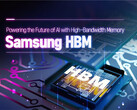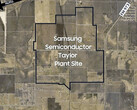Samsung told investors that production of fifth-generation HBM3E is expanding faster than end-market demand, a mismatch the company expects "to have an impact on market prices for the time being."
Management added that rising contract prices for mainstream DRAM will erode the once-wide profitability gap between HBM3E and conventional memory in the second half, limiting margin upside even if volumes grow.
The warning comes just as customers such as Nvidia and AMD shift toward 12-stack HBM3E for next-generation AI accelerators. Competitors SK Hynix and Micron are already mass-producing the denser variant, increasing the risk that inventory builds before the expected wave of demand fully materializes.
Internally, Samsung's semiconductor division is under pressure: quarterly operating profit collapsed 94 percent year-on-year to 400 billion Korean won ($287 million) as export controls, and inventory corrections weighed on results. To reverse the slide, the firm is streamlining HBM3E production costs in a bid to reclaim Nvidia's business that has largely gone to SK Hynix.
Memory revenue grew 11 percent versus Q1 as HBM3E shipments climbed, and Samsung plans to ramp 128 GB DDR5, 24 GB GDDR7, and 8-gen V-NAND through year-end. A $16.5 billion deal to fabricate Tesla's next-gen AI6 chips in Texas should further stabilize foundry utilization, although new 15 percent US tariffs on Korean goods cloud the demand outlook.
Industry insiders note that Samsung has floated price concessions. At the same time, Nvidia validates its 12-layer stacks, signalling that market leadership over the next cycle may hinge more on cost and yield than on headline bandwidth. Should Samsung achieve high-yield, lower-cost output ahead of rivals, the company could claw back share in the lucrative AI-memory segment—yet any misstep risks reinforcing the very oversupply that is now threatening HBM3E pricing.
Source(s)
ZDNET (in Korean)














